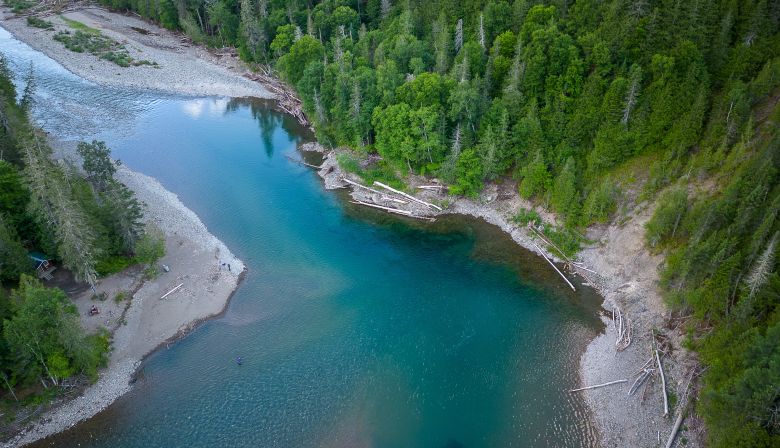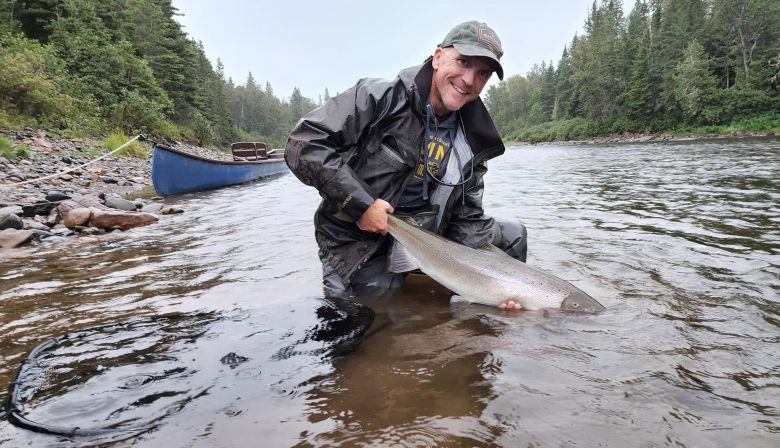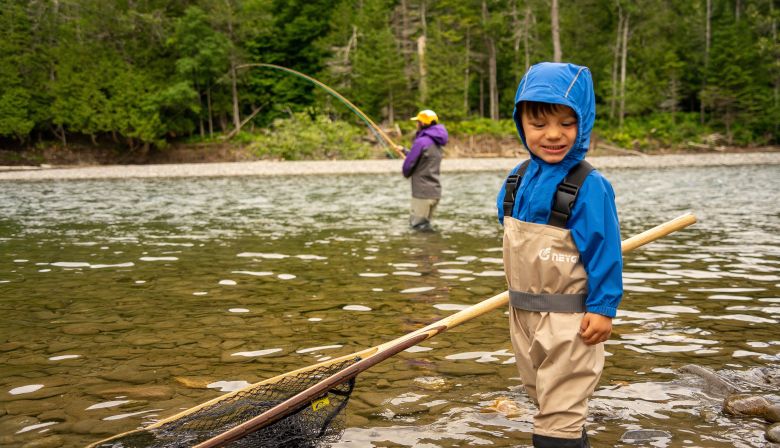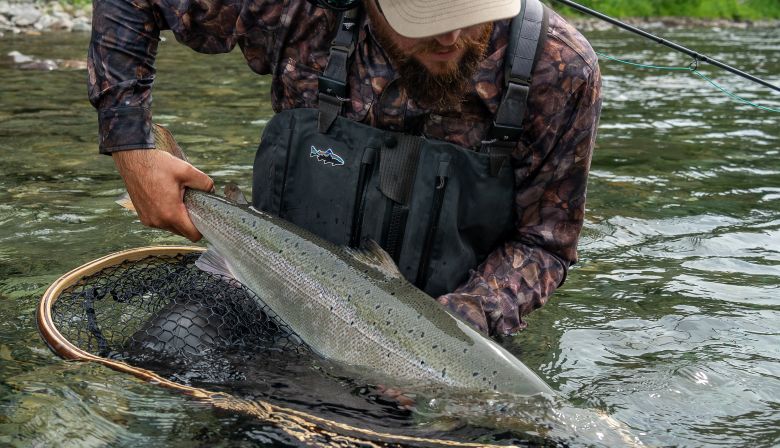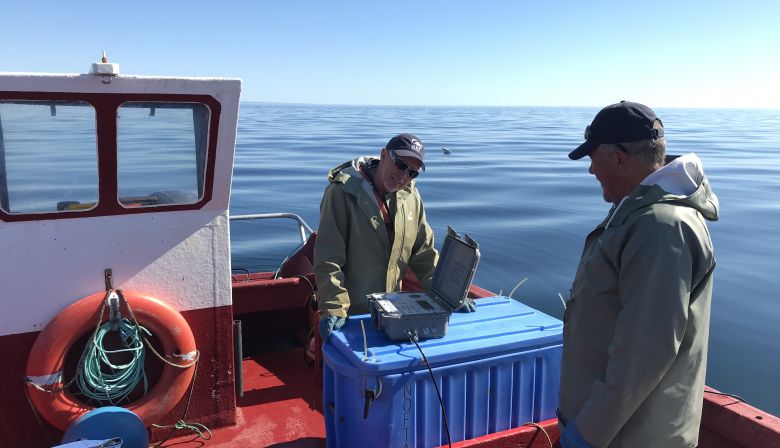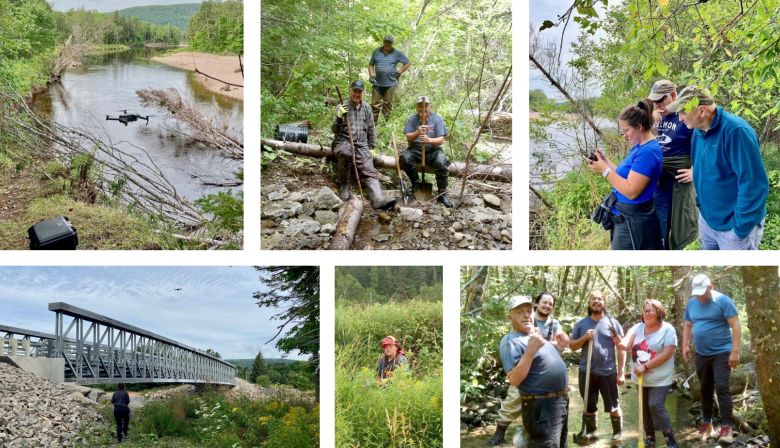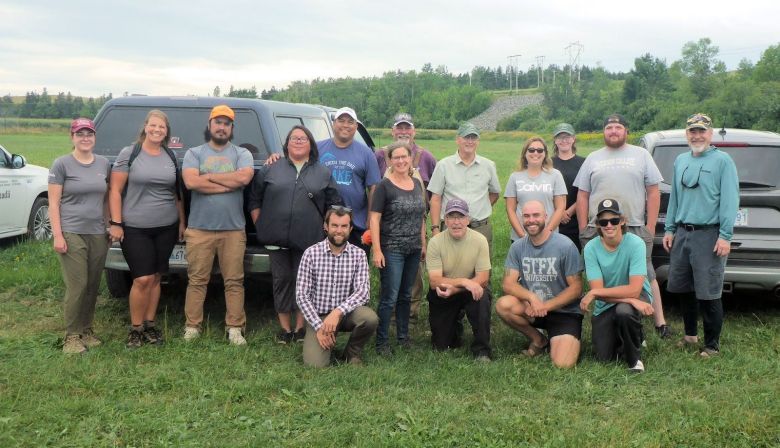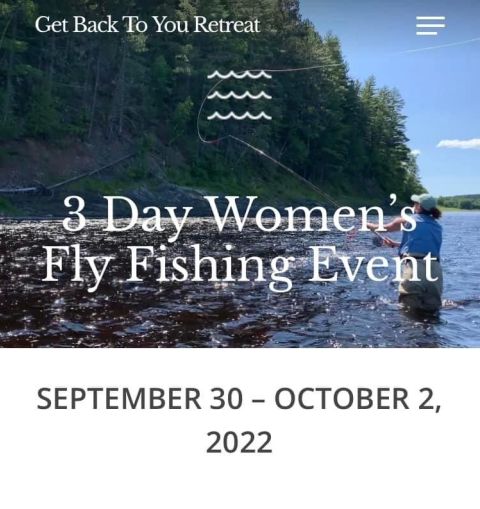From the desk of Don Ivany, NL Program DirectorWith the regular angling season on the Island of Newfoundland due to close on Sept 7th, and Sept 15th in Labrador, anglers far and wide are praying for heavy rains and cold temperatures, to salvage the remainder of the season before hanging up their rods for the year.
Unfortunately, light rain showers this past week did little, if anything, to increase water levels throughout NL. And while night-time temperatures are slowly starting to cool, the continuation of hot weather during the day has kept water temperatures warm. As a result, angling conditions have been poor throughout over the past week (with a few exceptions in Northern Labrador) and as a result, fishing has been slow. This has led DFO to restrict more rivers on the island to early morning fishing only.
See the latest DFO River Openings and Closures for NL.
There is good news in the forecast, with rainfall expected for much of next week. Hopefully this will improve conditions so that anglers may close out the regular season on a positive note. In the meantime, the fall angling season on the main stems of the ‘Big Three Rivers’ — the Humber, Gander, and Exploits, will continue until October 7th for release fishing only
Lastly, the latest DFO Fishway Counts for Newfoundland and Labrador (up to Aug 28, 2022) are now available.
See the latest DFO Fishway Counts for NL.
As you will note from the table, this will be the last count for the season for a few rivers identified by the following symbol: **.
Regional Round-Up
Southwestern NL – A couple of days of light rain last week rose water levels slightly on a few rivers in this area including Southwest River and Harry’s Rivers, but due to continued hot and dry weather that followed the levels quickly dropped again. As such, angling conditions remain poor in this area of the province and fishing is still very slow.
Western NL – While water levels are still fairly good for angling on the lower Humber, water temperature on this section of the river is now an issue, with temperatures averaging around 18 degrees daily. As a result, fishing is currently very slow in this area, with only an odd fish hooked. Meanwhile, conditions are worse on the upper Humber where the water level is very low and day-time water temperature averages between 20-22 degrees Celsius.
Main River (Sops Arm) saw a slight bump in water level last week, but it quickly dropped and is low again. Water temperatures on Main River have dropped from an average of 21.0 degrees Celsius daily to 15.5 degrees daily. There are few fish being seen in the lower sections of the river, as most fish have now reached the headwaters.
Labrador – Long-time guide, Lester Butt, reports that there was a good sign of fish on the Forteau River last week, as there has been all summer. An odd fish is still being hooked despite fair angling conditions. Rob French, owner of the Bigland Salmon Lodge on the Pinware River, reports that there was hardly any fish on the lower section of this river last week and the river was low and warm.
Further North, Tony Chubbs, with the Labrador Hunting and Fishing Association, provided the following update from the Kenamu River near Goose Bay:
“11th of August – Lowest water seen. Air temp 23-26C and water temp 16C. Fishing best this season. 3 Rods. Hooked our limits (2 large). Over 30 fish seen.
19th of August – Rained all day. Air Temp 18-20C. Water up about six inches from our previous trip on 11 August. Water temperature cool and estimated at 15C. We have been getting some thunderstorms and rain. Good fish activity. 6 fish hooked between three rods. About 15 fish seen. Most fish hooked are jacks.
22nd of August – Water up again another couple of inches with thunder showers during the day. Air temp 24C in afternoon. Estimated water temperature at 14C. Four rods fishing and 7 fish hooked, with about 20 fish (1 large) seen. Mostly grilse jacks.
We have not seen any other anglers fishing our section of the river this year.”
Central NL – All rivers here remain very low with warm water temperatures. As of August 31st, DFO restricted angling on the Terra Nova to morning fishing only due to low water levels and warm water temperatures.
Angler, Trevor King, reports there is still a good show of fish on the Lower Gander, but the water is very low and warm, and fish just aren’t interested. Matthew Morgan notes fishing has also slowed on the Exploits River, but an odd fish is still being hooked there.
Avalon Peninsula – Water levels are low and water temperatures warm on most rivers, yet the odd fish is still being hooked here and there.
In the Field
From August 15-18 we worked in the Northern Peninsula taking up and resetting some of our tracking gear within the Strait of Belle Isle. The following images were captured during this work.
